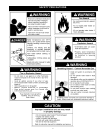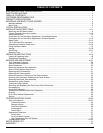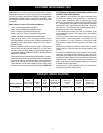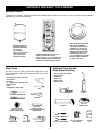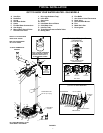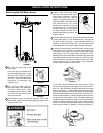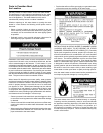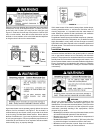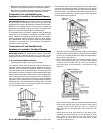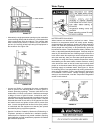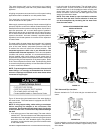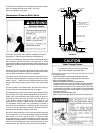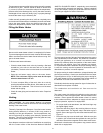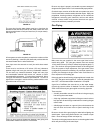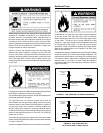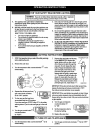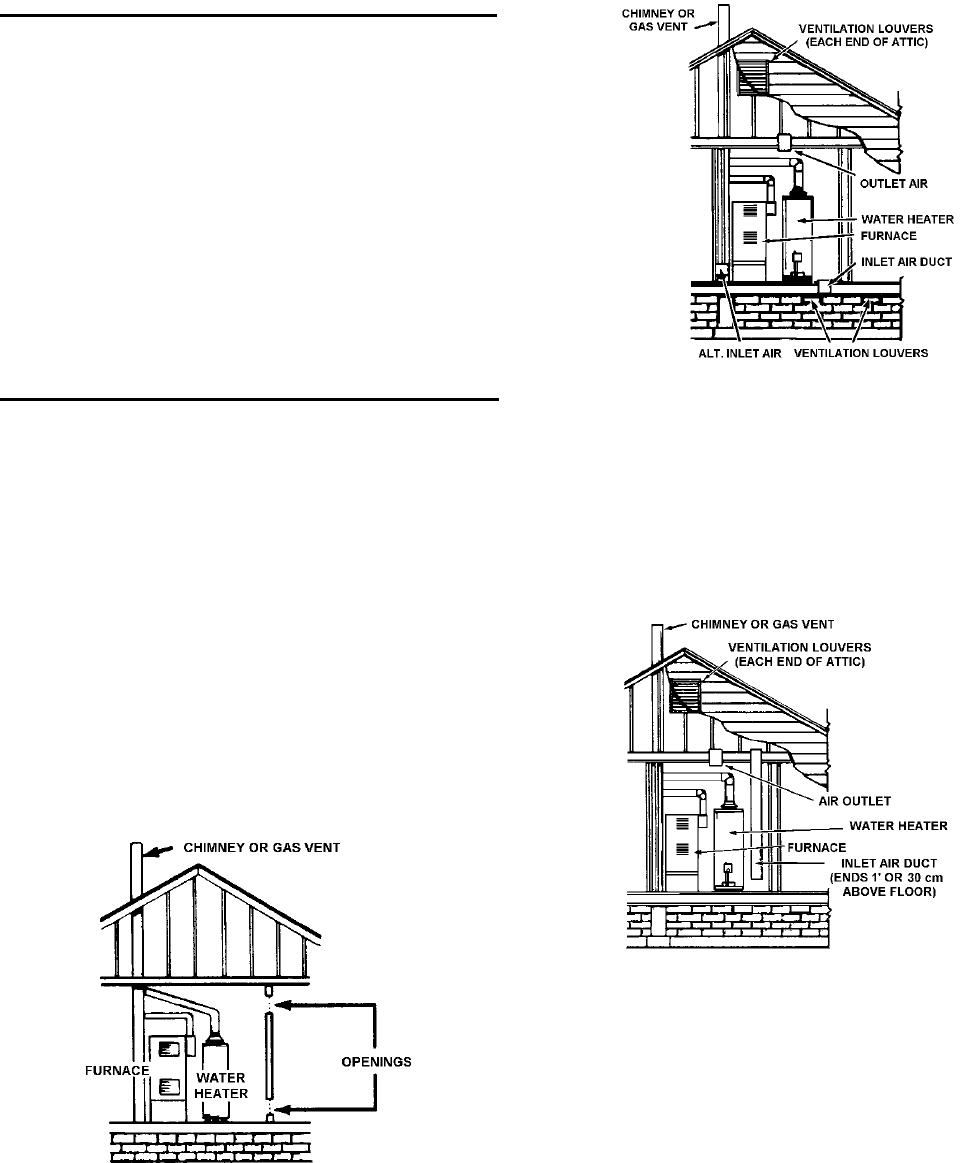
11
• Do obtain new warning and instruction labels from Sears for
placement on the blanket directly over the existing labels.
• Do inspect the insulation blanket frequently to make certain
it does not sag, thereby obstructing combustion air fl ow.
Combustion Air and Ventilation for
Appliances Located in Unconfi ned Spaces
UNCONFINED SPACE is space whose volume is not less than
50 cubic feet per 1,000 Btu per hour (4.8 m
3
per kW) of the
aggregate input rating of all appliances installed in that space.
Rooms communicating directly with the space in which the
appliances are installed, through openings not furnished with
doors, are considered a part of the unconfi ned space.
In unconfi ned spaces in buildings, infi ltration may be adequate
to provide air for combustion, ventilation and dilution of fl ue
gases. However, in buildings of tight construction (for example,
weather stripping, heavily insulated, caulked, vapor barrier,
etc.), additional air may need to be provided using the methods
described in Combustion Air and Ventilation for Appliances
Located in Confi ned Spaces.
Combustion Air and Ventilation for
Appliances Located in Confi ned Spaces
CONFINED SPACE is a space whose volume is less than
50 cubic feet per 1,000 Btu per hour (4.8 m
3
per kW) of the
aggregate input rating of all appliances installed in that space.
A. ALL AIR FROM INSIDE BUILDINGS:
(See Figure 9 on page 10 and Figure 10 below)
The confi ned space shall be provided with two permanent
openings communicating directly with an additional room(s) of
suffi cient volume so that the combined volume of all spaces
meets the criteria for an unconfi ned space. The total input of all
gas utilization equipment installed in the combined space shall
be considered in making this determination. Each opening shall
have a minimum free area of one square inch per 1,000 Btu per
hour (22 cm
2
/kW) of the total input rating of all gas utilization
equipment in the confi ned space, but not less than 100 square
inches (645 cm
2
). One opening shall commence within 12 inches
(30 cm) of the top and one commencing within 12 inches (30
cm) of the bottom of the enclosures.
The confi ned space shall be provided with two permanent
openings, one commencing within 12 inches (30 cm) of the top
and one commencing within 12 inches (30 cm) from the bottom
of the enclosure. The openings shall communicate directly, or
by ducts, with the outdoors or spaces (crawl or attic) that freely
communicate with the outdoors.
FIGURE 11.
• When directly communicating with the outdoors, each opening
shall have a minimum free area of 1 square inch per 4,000 Btu
per hour (5.5 cm2/kW) of total input rating of all equipment in
the enclosure. See Figure 11.
• When communicating with the outdoors through vertical
ducts, each opening shall have a minimum free area of
1 square inch per 4,000 BTU per hour (5.5 cm2/kW) of
total input rating of all equipment in the enclosure. See
Figure 12.
FIGURE 10.
FIGURE 12.
• When communicating with the outdoors through horizontal
ducts, each opening shall have a minimum free area of
1 square inch per 2,000 BTU per hour (11 cm
2
/kW) of
total input rating of all equipment in the enclosure. See
Figure 13.
• When ducts are used, they shall be of the same cross-
sectional area as the free area of the openings to which
they connect. The minimum short side dimension of
rectangular air ducts shall not be less than 3 inches
(76.2 mm). See Figure 13.
B. ALL AIR FROM OUTDOORS: (See Figures 9, 11,12,13 and 13A)



